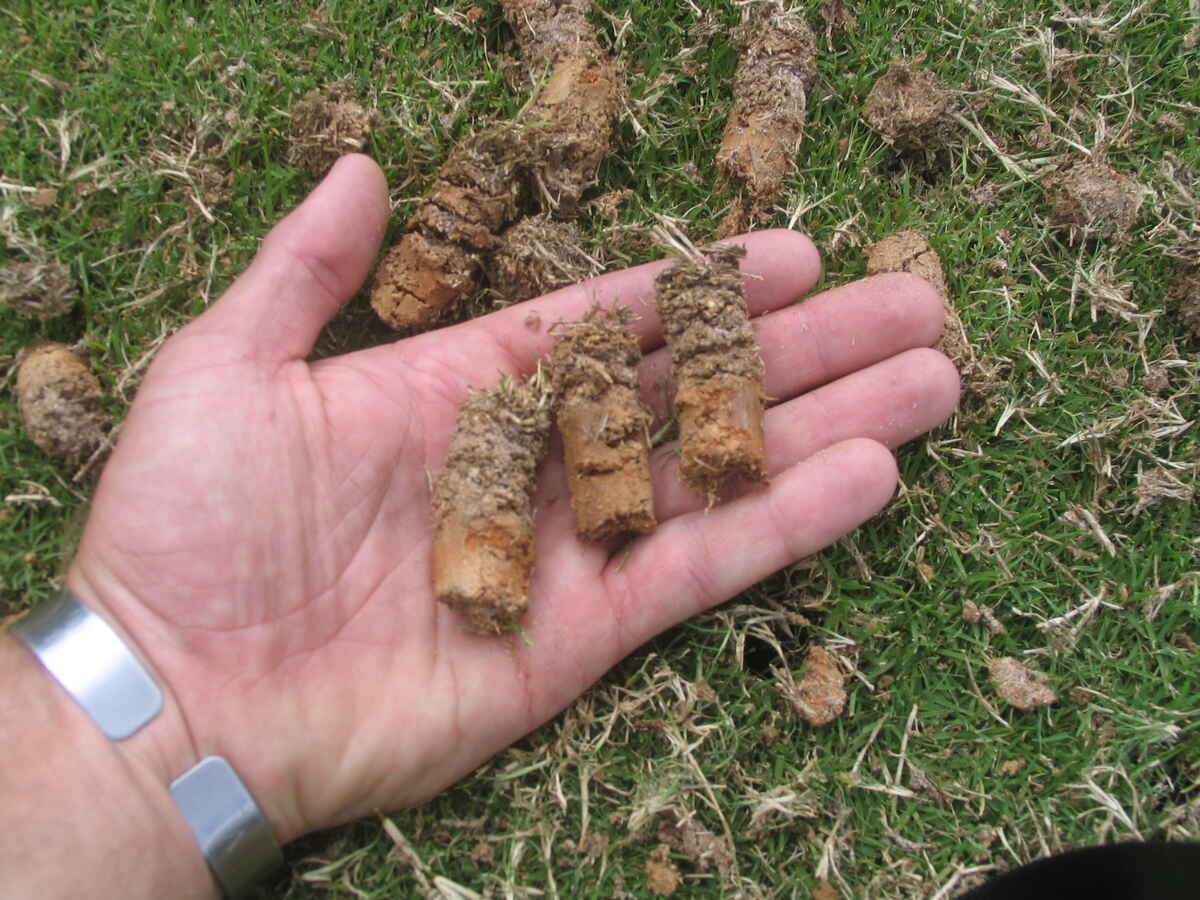
The path to the perfect lawn is full of pitfalls. Discover the 9 aeration and overseeding mistakes to avoid, from improper watering techniques to misusing the aeration machine.
Thinking about aerating and overseeding in the fall? Avoid this approach if you’re planting warm-season grass. Even aerating and overseeding heat-loving grasses during the peak of summer is a big mistake.
Get ready to turn your lawn from zero to hero without the errors. We’ll help you avoid the bloopers and show you what to do instead.
- Aeration and Overseeding Common Mistakes
- 1. Aerating and Overseeding During the Wrong Season
- 2. Choosing the Wrong Equipment
- 3. Misusing the Aeration Machine
- 4. Aerating and Overseeding During Dry Conditions
- 5. Mowing Too Soon After Overseeding
- 6. Applying Fertilizer on Grass Seed
- 7. Using Weed Killers on New Grass
- 8. Improper Watering Techniques After Overseeding
- 9. Overseeding With the Wrong Type of Grass
- When to Hire a Professional
Aeration and Overseeding Common Mistakes
1. Aerating and Overseeding During the Wrong Season
The secret to successful aeration and overseeding is timing it with your grass’s active growth season. When your lawn is growing, it can recover quickly from the aeration process, and it’s ready to be overseeded and become more robust. The right time for aeration and overseeding depends on whether you’ve got cool-season or warm-season grass.
- Cool-season grass thrives best when aerated and overseeded in early spring or fall. Fall is better because the temperatures start to chill out, and the moisture levels rise, helping the turf bounce back faster.
- If you have warm-season grass, aerate and overseed in late spring through early summer. This is when your grass is actively growing and ready to recover from aeration.
Pro Tip: Beware of aerating during the peak summer heat. It’s like forcing yourself to run a marathon at noon in July. Your grass will feel stressed, and nobody wants a stressed-out lawn.
2. Choosing the Wrong Equipment
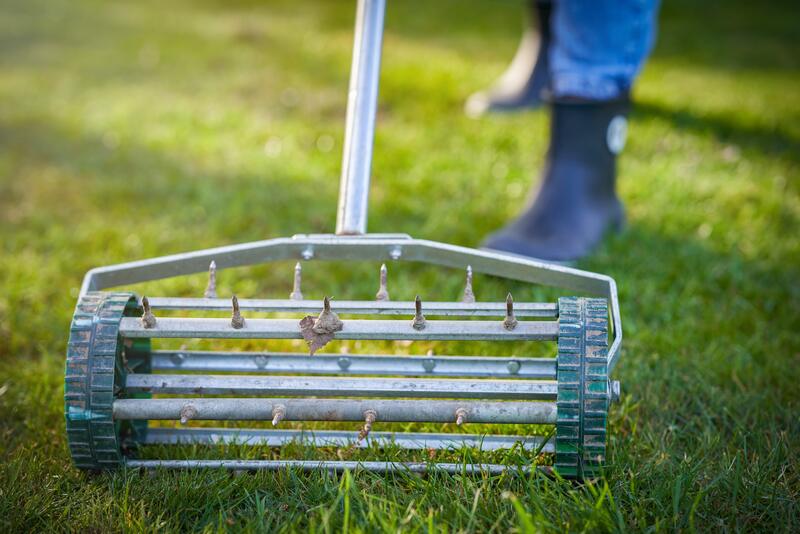
You’re ready to aerate and overseed your lawn, but you’re faced with a dizzying array of tools and machines. Unless you want to end up feeling like you’ve entered a lawn care obstacle course, take your time and pick the right one for you. Choose poorly, and you will find yourself working too hard or, worse, making a mess of your yard.
Here are some options to save you from an aeration misadventure:
- Manual aerator: This gadget is as basic as it gets. It is a stick with a T shape that you use to poke holes in your lawn. It’s great for small yards. However, using this on a large lawn? It’s not a good idea. Stick to manual aerators if your lawn is small or you need a quick fix.
- Gas-powered, push-behind core aerator: Imagine a lawnmower that punches holes instead of cutting grass. This machine is your go-to for larger lawns with serious soil compaction issues. You can rent it. Just make sure you know how to operate it.
- Tow-behind aerator: This device hooks up to your mower, and you simply drive slowly across your lawn, letting the machine do all the hard work. It’s an excellent choice for big spaces with compacted soil.
You’ll also need the right equipment for overseeding. Here are the main types of seeding spreaders:
- Hand-held spreader: This device is perfect for small lawns of around 1,500 square feet or less. It distributes the seeds in front of you as you walk.
- Drop spreader: For bigger lawns under 5,000 square feet, the drop spreader is the best option. This spreader gives precise control over where the seeds fall. It’s good for navigating tight areas with landscaping or flower beds.
- Broadcast spreader: This is the best option for larger lawns, ranging from 5,000 to 20,000. This spreader works best in wider areas with straight runs and minimal turns. It covers big spaces quickly and efficiently.
Choosing the right equipment can make the difference between a job well done and a backyard blooper reel.
3. Misusing the Aeration Machine
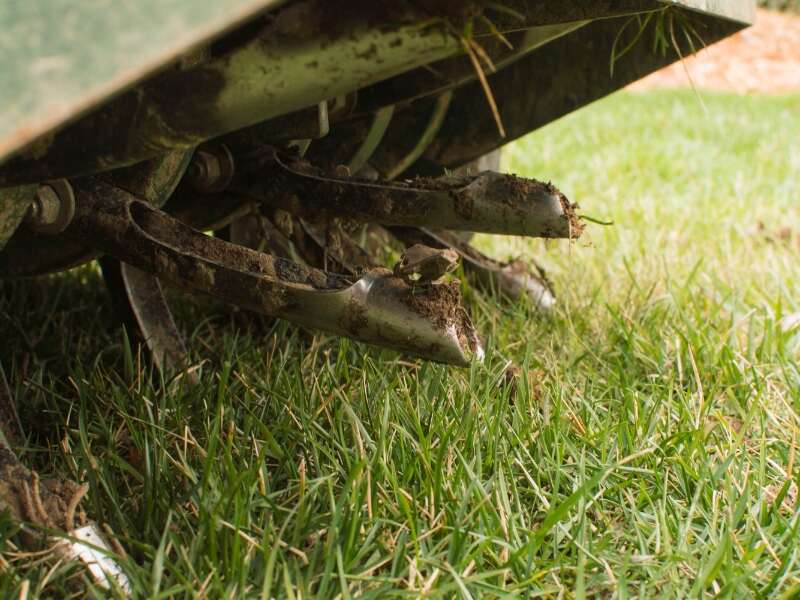
Core aeration machines can be a bit tricky, especially if you’re not a lawn care pro. Here are some common mistakes when using an aerator:
- Losing control of the machine: Imagine trying to guide the aerator machine and losing control of it. Before you know it, you’re zigzagging like a lawn care rodeo. To avoid this, take your time to understand the controls. Start slow and steady, and keep a firm grip.
- Creating uneven holes: Aerating in straight lines with 20 to 40 holes per square foot is the objective. If you are not a pro your lawn may end up resembling Swiss cheese full of random, uneven holes. If you’re unsure how to do the job, call a lawn care professional.
- Damaging underground sprinkler heads, pipes, and cables: If you are not careful you can run over a sprinkler head or slice through an underground cable. This can result in costly repairs. Before you start, map out your lawn and mark any hidden obstacles. Call 811 to have a professional flag underground utility lines for free.
Misusing the aeration machine can put you and anyone around you at risk. Aeration machines are no joke. Make sure you’re wearing appropriate safety gear and keep bystanders at a safe distance. For step-by-step instructions, check our guide on How to Aerate a Lawn.
Avoid these aeration mistakes, and stay safe and sound. If you feel unsure how to use an aeration machine it may be time to call a pro to do the job.
4. Aerating and Overseeding During Dry Conditions
Moisture is a major topic when aerating and overseeding your lawn. Aerating dry, compacted soil is like trying to dig into concrete. Even the most powerful equipment can struggle, leaving you frustrated and your lawn looking like a construction site.
Here’s how to avoid the dry disaster and get it just right.
- Watering: Hit that sweet spot where your lawn is moist but not drenched. It should be like a sponge: you want it to be damp enough to squeeze easily, not so wet that it drips all over. To achieve this, water your lawn two days before you plan to aerate. This will soften up the soil to let the aerator work better.
- Plan Ahead: Plan your aeration session when you know you’ll have the right conditions. Avoid days when heavy rain is forecasted but also steer clear of drought conditions.
5. Mowing Too Soon After Overseeding
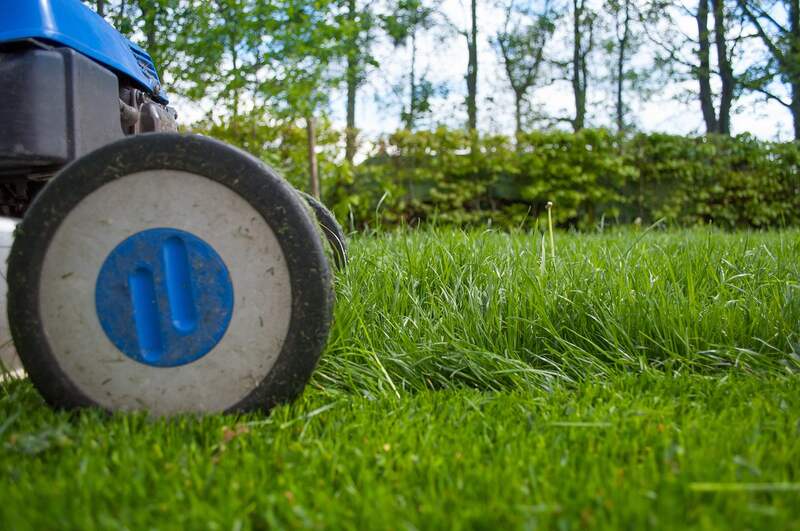
New grass needs time to establish itself and grow properly. Mowing too soon can yank new shoots right out of the ground, turning your hard work into a patchy mess. Give your grass time to establish deep roots and grow strong before you introduce it to the mower.
Cut your new grass when it reaches 3 to 4 inches tall. This can take anywhere between two and eight weeks, depending on the grass you plant.
Pro Tip: When the waiting period is up and your grass is ready for its first cut, make sure your mower blades are sharp and mow the highest recommended for your type of grass. This will avoid stressing the young grass. Check out this article for the recommended mowing heights by type of grass.
6. Applying Fertilizer on Grass Seed
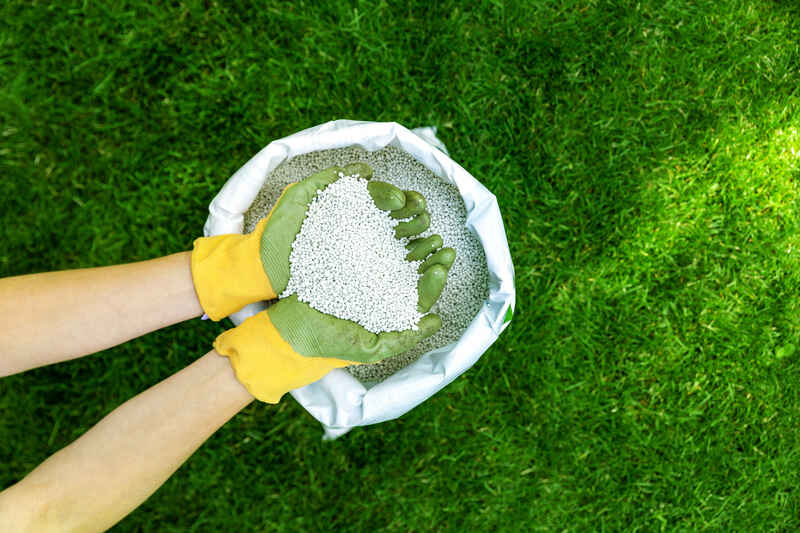
Many pros recommend fertilizing and overseeding at the same time. But if you don’t want your established grass and seeds battling it out for nutrients, it’s better to wait some weeks. Why?
- Burn, baby grass, burn: Fertilizers designed for established grass are too harsh for tender grass seeds and young blades. Instead of nourishing them, you’ll end up burning them. To learn more about the harm this causes, check out our article What Is Fertilizer Burn?
- Starter fertilizer? Not so fast: When it comes to overseeding, applying starter fertilizer is a no-go. While starter fertilizer is fantastic after seeding a brand-new lawn, it can cause problems when used on established grass.
The best time to fertilize is about six to eight weeks after overseeding. By this time, your new grass has had a chance to establish itself and grow stronger roots. When you apply fertilizer, you’ll be helping your grass grow thicker and healthier, without the risk of burning it.
7. Using Weed Killers on New Grass
Using weed killers on new grass can cause more problems than it solves. Herbicides and young grass are a terrible mix. The chemicals can damage the fragile roots and fresh blades, stunting their growth or even killing them. Your best bet is to give your new grass time to establish itself before any weed control method.
8. Improper Watering Techniques After Overseeding
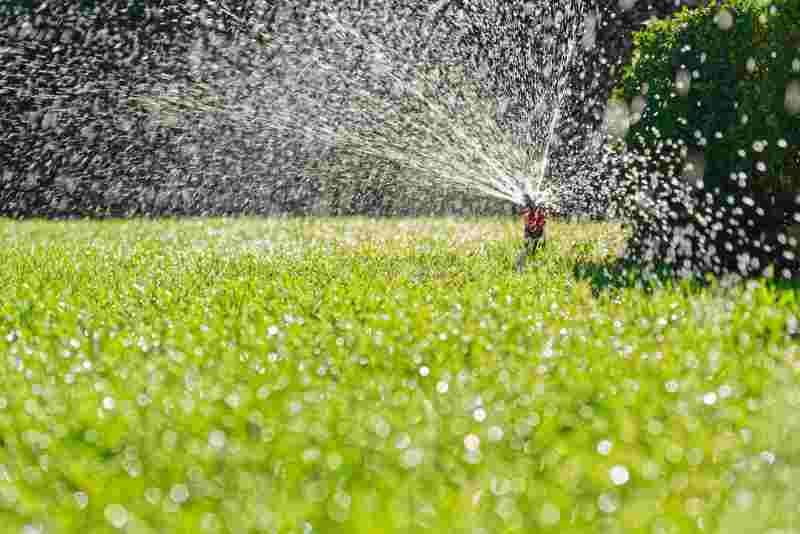
One classic mistake in lawn care is getting the watering routine wrong after overseeding. Finding that sweet spot is crucial for your new grass to take root and grow. Pay attention to the following tips:
- Moist, not drenched: For about three weeks after seeding, your mission is to keep the soil moist (like a sponge, not a swimming pool). If you let it dry out, seeds won’t stand a chance. But if you overdo it, you’ll have seeds floating away, which is not the goal.
- Sprinkler duty: For the first few weeks, you’ll be on sprinkler duty. You’ll need to water daily, two to four times a day for 5 to 10 minutes.
- Finding balance: Keep the top 1.5 inches of soil consistently moist until germination, which usually takes one to three weeks. After that, once you see green shoots peeking out and gaining a bit of height, you can gradually ease back to your normal watering pattern.
Grab your hose or set those sprinklers, and get ready to nurture your lawn with the perfect balance of moisture. Your patience and diligence will pay off. Here are more details on How Often to Water Grass Seed.
9. Overseeding With the Wrong Type of Grass
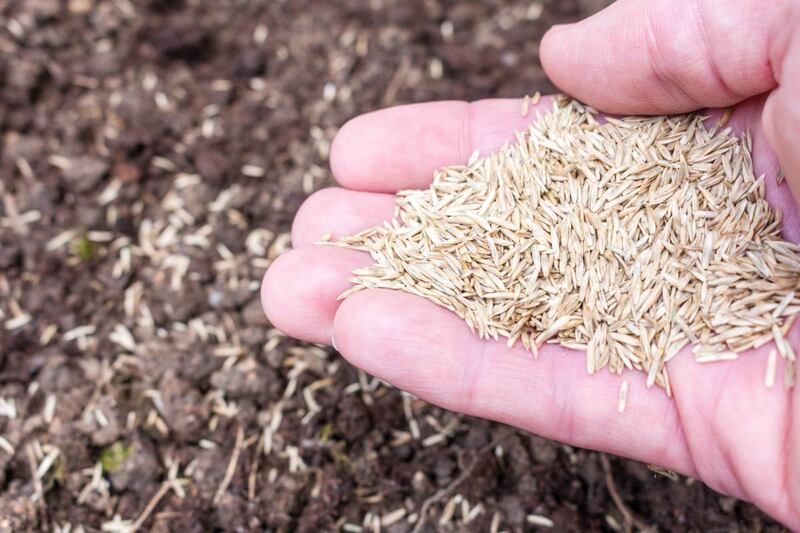
To avoid choosing the wrong type of grass for overseeding, you need to select a grass variety that matches your local climate, the amount of sun and shade your lawn gets, as well as other key factors.
- Climate compatibility: Ensure the grass type is suited to your region’s climate. Cool-season grasses like Kentucky bluegrass thrive in cooler areas, while warm-season grasses like Bermudagrass flourish in hotter climates.
- Sun and shade balance: Consider the amount of sunlight your lawn receives. Some grasses can resist shady spots. Match your seed choice to your lawn’s light conditions for the best results.
- Foot traffic: If your lawn endures a lot of foot traffic (kids, pets, and backyard parties), pick a grass that can withstand the wear and tear. Check out our article Best Grasses for High-Traffic Yards.
These factors are just the tip of the iceberg. To learn more, check out our article How to Choose the Right Grass for Your Lawn.
When to Hire a Professional
After aeration and overseeding– especially when you do it right– you’ll see your lawn thriving and full of health. If you need help to keep it looking its best, consider hiring a lawn care professional. These experts have the know-how to maintain your lawn and keep it looking beautiful.
Main Image Credit: Oregon State University / Flickr / CC BY-SA 2.0